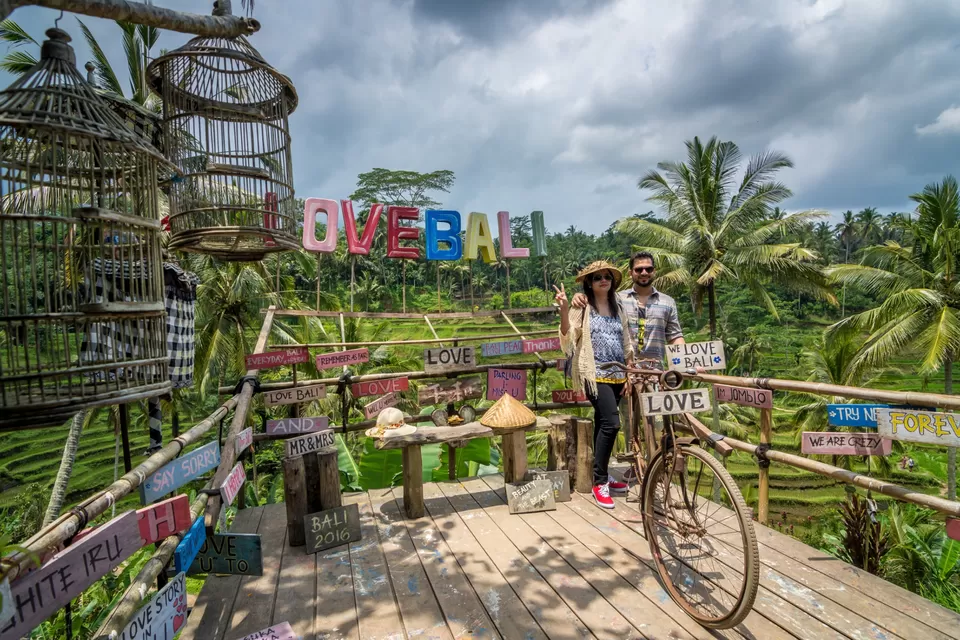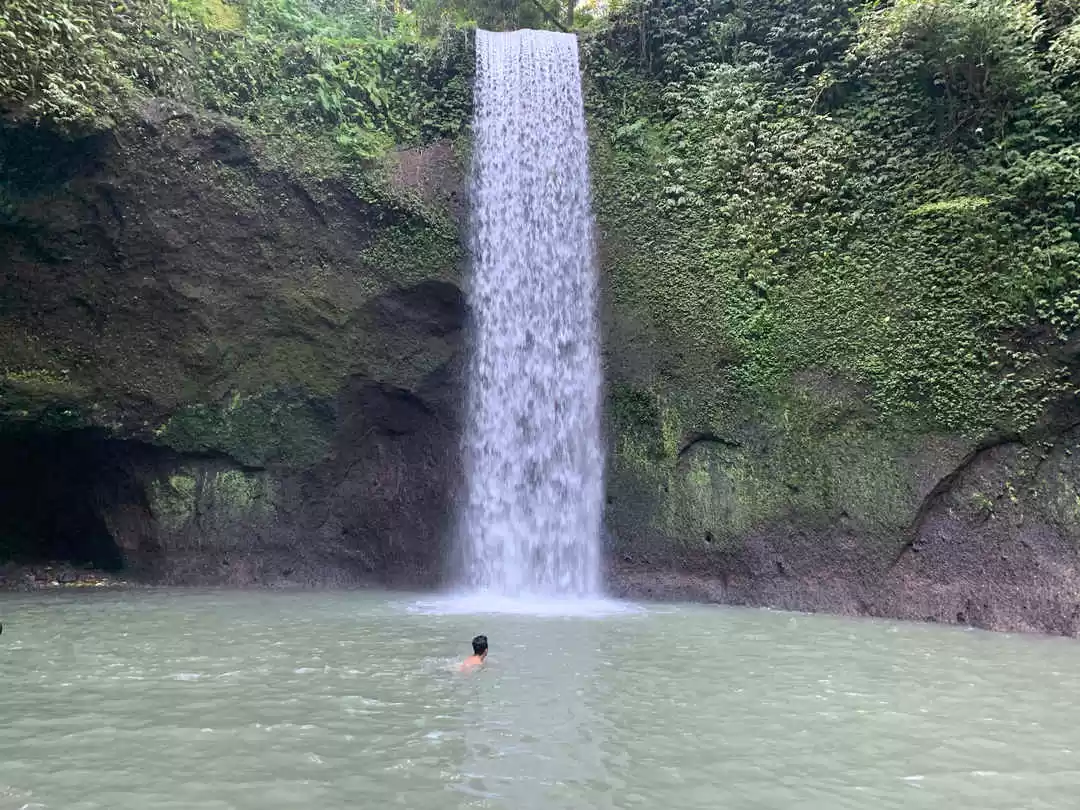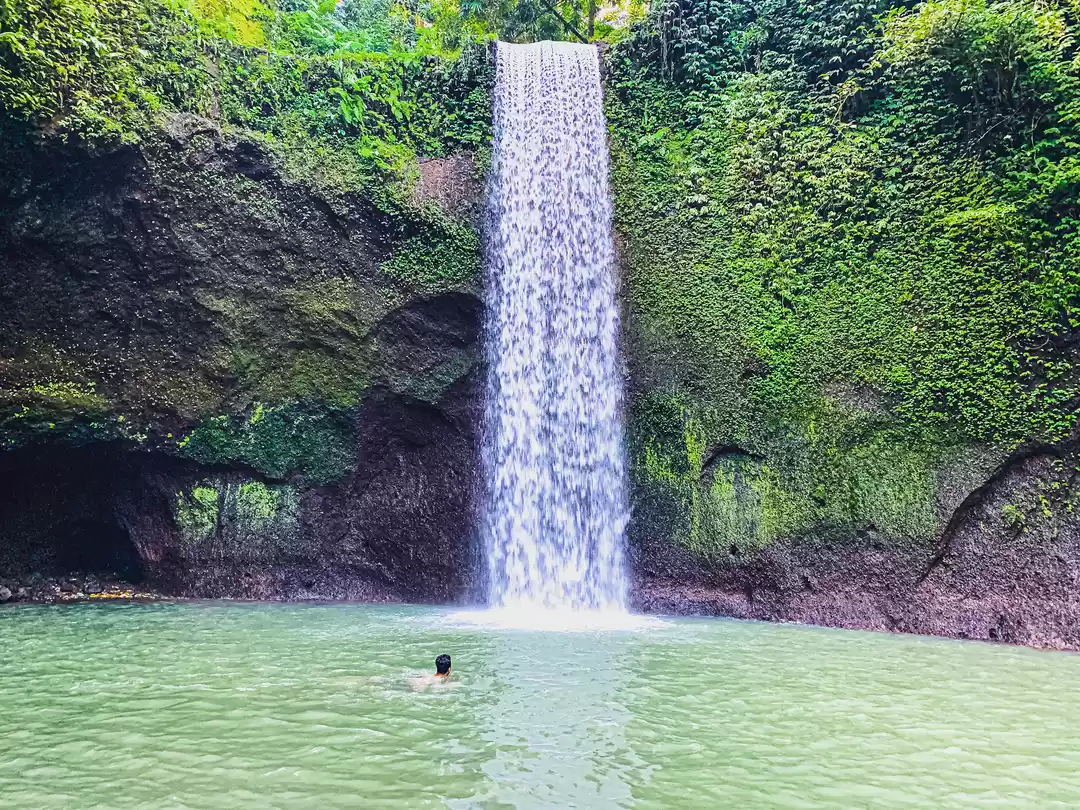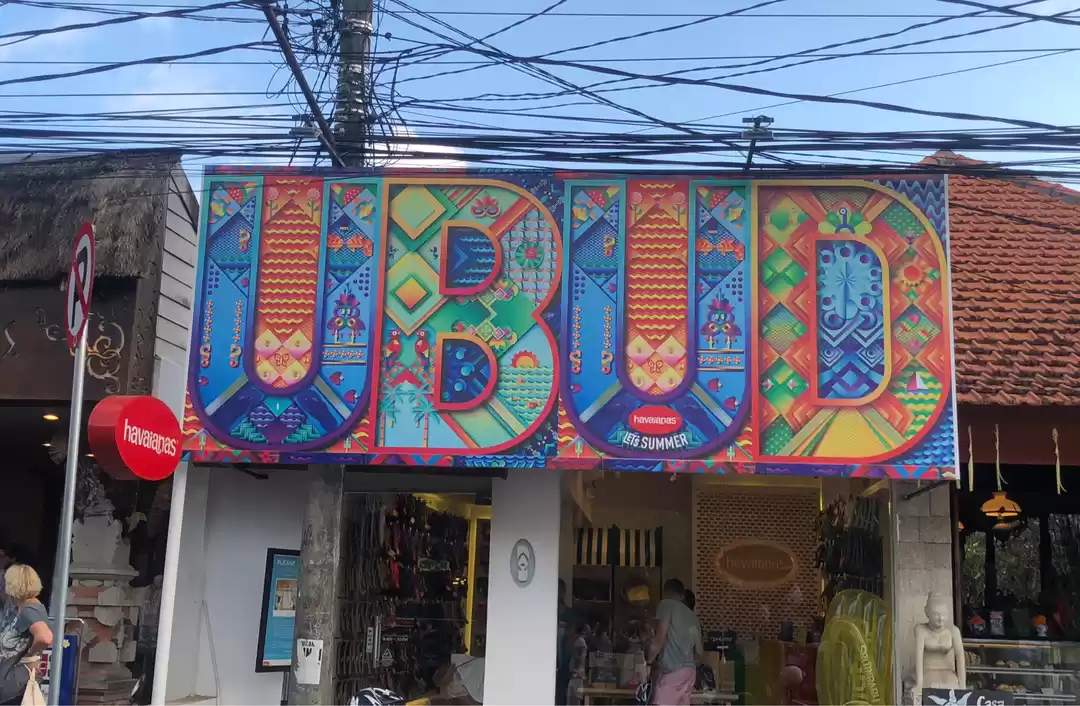Ubud & Kintamani Tour
Travelling, it gives you home in a thousand strange places. Then leaves you a stranger in your own land.
~Ibn Batuta
Ubud is that tropical paradise, you see in your dreams! The spell-binding rice terraces, the ancient temples, the vibrant art market, the striking museums and last but not the least, the 'fine-dine' scene, Ubud is undoubtedly the treasure house of Bali. This Balinese traditional country town is home to one of Bali’s royal families, and hence has many royal palaces. Many renowned artisans from around the world have visited this cultural town in the past & have worked in. Along the main street are dozens of art studios and galleries, along with an excellent local crafts market selling antiques, woodcarvings, crafts, textiles, paintings, and jewellery. A short drive on the outskirts of Ubud will land you at the Tegenungan Waterfall, Ubud Monkey Forest, and the mesmerising Tegallalang rice terrace. Join a day trip to local villages like Campuhan, Penestanan, Peliatan and Batuan, where you can see locals making and selling authentic Balinese crafts.
A little bit of history of Ubud. . .
According to an eighth century legend, Rishi Markendeya, an Indian sage, set off on a spiritual journey, walking across the island of Java, to spread the teachings of Hinduism. Eventually, he and his large group of followers reached the island of Bali and attempted to settle in the vicinity of Taro (a locale north of Ubud). Unluckily, they were struck down by a cholera epidemic and many perished. Rishi(sage) Markandeya led the surviving devotees back to Java, where they re-grouped and after a while made their way to Bali again, although this time their number was somewhat diminished.
Upon returning to Bali, the priest was drawn to a place where the two branches of the river Wos converged, pulled there by the intense energy and light which emanated from this spot. Rishi Markandeya was inspired to meditate there and while doing so, received a strong message from the Gods. They told him to proceed to Mount Agung (Bali’s center of spirituality), and there he was to bury five precious metals (Pancha Datu) in the ground as a foundation of power for the temple of Besakih (known in Bali as the Mother Temple).
He and his followers did so, and later they returned to settle in the spiritually powerful location where the two rivers joined, known as "Campuhan". There, in the lap of nature, at the confluence of the two rivers, he and his followers constructed a temple and they named it "Pura Gunung Lebah".
There on the banks of the two rivers grew many kinds of plants with marvelous healing qualities, so they christened their new home "UBAD", which, in local language means a healing place or medicine.
Through the centuries many Hindu devotees have come regularly to this special place to meditate, bathe and take some of the holy water for cleansing rituals and temple ceremonies. With the passing of time, the name UBAD gradually evolved to the name UBUD.
1. Bali Batuan Temple
Batuan Temple, referred to locally as Pura Puseh Lan Pura Desa Adat Batuan, is located in the village of Batuan which is famous for its traditional Balinese paintings. Well-preserved sandstone bas motifs and traditional Balinese temple architecture are the high points of this exquisitely beautiful temple.
Up the 5-tiered candi bentar gate of Batuan Temple, you’ll come across various reliefs depicting mythical Balinese figures and floral themes, as well as statues depicting the Hindu trinity: Brahma, Vishnu and Shiva, further inside. A series of multi-tiered thatched-roof shrines within the temple’s inner courtyard are set in a layout that is typical of all large temple complexes in Bali. The temple pavilion’s wooden beams and ceilings are heavily engraved and gilded.
This was our first stop in Ubud, and because it is a temple, our cab driver had informed us to be prepared to don "Sarongs". For the uninitiated, a sarong is a lower garment, much like a skirt which is wrapped around the waist. This garment is to be worn compulsorily while visiting any temple in Bali. Often in Bali, the temple staff distribute them to the visitors, which can be worn on top of any kind of outfit.
2. Tegalallang Rice Terrace
After visiting the Batuan Temple, our next stop was, "The Tegalallang Rice Terraces". It took us 30-40 mins to reach here from the Batuan Temple. For the most part of the journey, you'll get to see the big and small shops of local artisans with their stone carved sculptures lined on both sides of the road.
The Tegallalang Rice Terraces in Ubud are famous for their magical views of rice paddies and their innovative irrigation system. Known as the subak, the traditional Balinese cooperative irrigation system is said to have been passed down by Rishi Markandeya himself in the 8th century. Tegallalang forms the 3 most splendid terraced landscapes in Ubud's shared region, with the others being in the villages of Pejeng and Campuhan. The Tegallalang rice terraces spreads down and away to the far side of the valley. The high roadside location is cool and breezy and it’s a well-known spot for tourists to stop and take photos. This place is also very famous among painters and nature lovers.
At the entrance there are few souvenir shops, a cafe & the ticket counter. You have to pay a small fee for the tickets so make sure you carry some change along with you.
Bali Photo Opportunity
A visit to the famous rice terraces is incomplete without getting few pictures clicked at the "Love Bali" sign. And considering the fact that this photo spot is just a few steps away from the entrance, its totally worth it. A guy with a camera hanging on his neck, greeted us and invited us into this balcony like structure on which the "Love Bali" sign is mounted. There were also a cycle, balinese hats and many other props. He helped us with the props and clicked some cool pictures of us against some nominal charge.
We went quite inside into the rice terraces with some fellow tourists, and clicked some pictures of the amazing views from there. The paths can have tiny pools of water and can get slippery, so its good to exercise caution while walking on the terraces.
Our next destination was Kintamani which is a highland area in the north of East Bali. It lies 36.7 kms away from Ubud, and takes an hour to reach. By the time we started from Ubud, we could predict an impending downpour and soon after we left Ubud, light drizzles started. The light drizzles converted into heavy rains in some time, but our cab driver was unperturbed, he stressed that the rain would hardly last for 30 mins and voila, it did stop soon. That's the thing about tropical rains, they don't last long. We drove past many villages, small temples, plantations and forests. I would say, Bali is a cornucopia of tropical vegetation.
3. Kintamani and Mount Batur
We reached Kintamani around 1.30 pm and were hungry, so we directly headed for lunch. There are many restaurants lined on the road side, once you enter Kintamani village. Prathamesh had chosen one particular restaurant, so without having any second thought, we got into that. The best thing about restaurants in Kintamani is, all of them offer spectacular views of Mount Batur and Lake Batur, so make sure you choose the right seat for you.
The restaurant was a bit crowded when we reached, and all of the view facing seats were filled up. So, the waiter guided us to the roof top restaurant, which was not crowded. We grabbed a perfect seat and ordered our food. Weather was lovely with a gentle breeze flowing and the breathtaking view of Mount Batur from far was making it one amazing lunch experience.
We chilled there for an ample amount of time before heading to the next spot, which was the famous, "The Ubud Art Market".
4. Ubud Art Market
On our way back from Kintamani, the weather was fine and sunny. That's the thing about tropical climate, one moment it would be raining heavily, the other moment the sun would be shining brightly. The market lies at a distance of 36.7 km from Kintamani and is a 1 hour drive. The roads near the market place can have a bit of traffic and roads can get little narrower, so its better to walk and explore. Our cab driver dropped us at an entry point and left to park.
The Ubud Art Market is a unique market where you can find everything under the sun. Don't mistake it to be an art & craft market due to it's name. You can find pretty silk scarves, lightweight shirts, statues, kites, handmade woven bags, baskets, hats and many other hand-crafted goods. Locally it is known as Pasar Seni Ubud and is located opposite the Puri Saren Royal Ubud Palace and is open daily. Most of the goods found at the Ubud Market are made in the neighbouring villages of Pengosekan, Tegallalang, Payangan and Peliatan. The location of the Ubud Art Market, which is centred among the art producing villages and at the centre of Ubud itself, makes it a strategic shopping place for Balinese handicrafts and souvenirs. The Ubud market was shown in a Hollywood movie Eat Pray Love, which has a scene with actress Julia Roberts opposite a male character strolling through the stalls which in real life are also frequented by foreign and local visitors alike. Do test your bargaining skills here.
Strolling by the streets gazing at the various items on display from one stall to another, admiring the craftsmanship and the artistic talent of the Balinese is an experience that's much more interesting than buying the stuff. Compared to other art markets in Bali, such as Kuta, the Ubud Art Market has items superior in quality and much more variety. Apart from common stuff that are available all around the island, like beach clothes and shirts printed with “Bali” on them, you can also find Balinese-style paintings, wood carvings and woven baskets. But the highlights of Ubud Art Market are items like Moroccan-style oil lamps, brass Buddha statuettes, and Bohemian clothes.
5. Kopi Luwak/Luwak Coffee Experience
Kopi luwak or civet coffee, is coffee that includes partially digested coffee cherries, eaten and defecated by the Asian palm civet (Paradoxurus hermaphroditus). Fermentation occurs as the cherries pass through a civet's intestines, and after being defecated with other fecal matter, they are collected. Producers of the coffee beans argue that the process may improve coffee through two mechanisms, selection – civets choosing to eat only certain cherries – and digestion – biological or chemical mechanisms in the animal's digestive tract altering the composition of the coffee cherries.
Tasting Luwak Coffee was something on the back of our mind, but we were VERY unsure about it (cause who wants to taste shit? :P). On our way back from Ubud Art Market, our cab driver recommended us to visit a government run luwak coffee producing organisation. He convinced us to atleast see the process of luwak coffee production, and taste various different teas that are grown and processed there itself. No charges.
The place was absolutely amazing and resembled a forest. It has a small shop where you can find their produces like teas, coffees, luwak coffee, soaps, incense sticks and more.
We were allotted a guide, who took us around the place. We saw the luwaks, their faeces and how coffee is produced from them. After seeing the process, our perspective changed a bit. She then served us 12 different varieties of tea like rose tea, chamomile tea, ginger tea & so on. All of them tasted different and had an authentic smell.
At last they brought 2 cups of kopi luwak for us and offered us to atleast take a sip. Me & Prathamesh took 1 sip each and that was it. But honestly, it tasted just like normal coffee. Kopi Luwak is 4 times pricier than normal coffee, just because of its production costs.
This brings us to an end to Ubud blog. I hope you all enjoyed reading it. In the next blog, I shall be covering Seminyak and Tanah Lot, which were 2 of the most wonderful places we visited in Bali. Do not forget to subscribe to our blog for latest updates.






















































